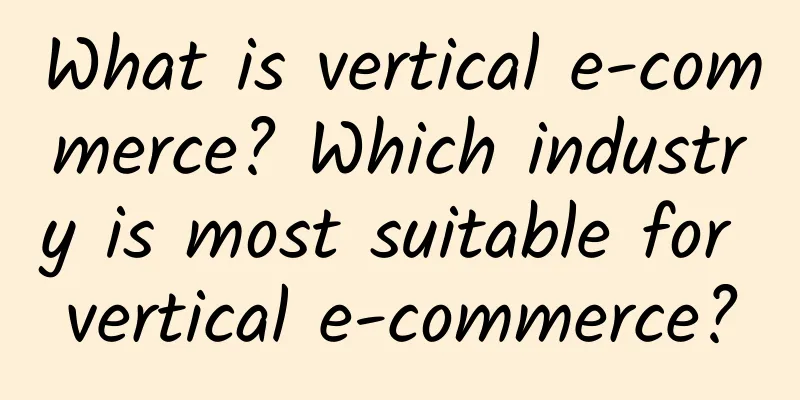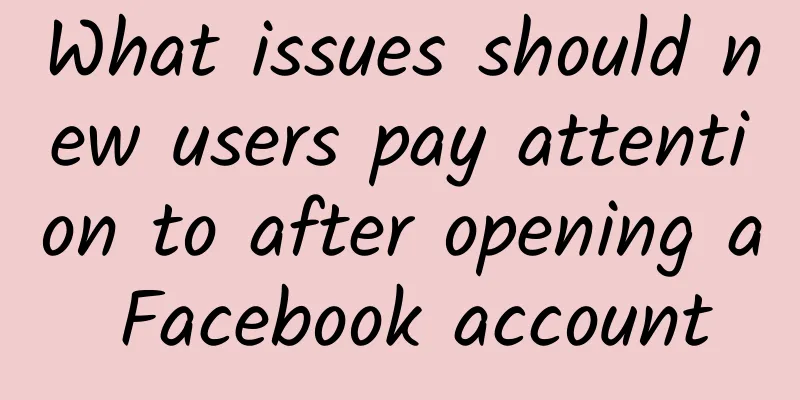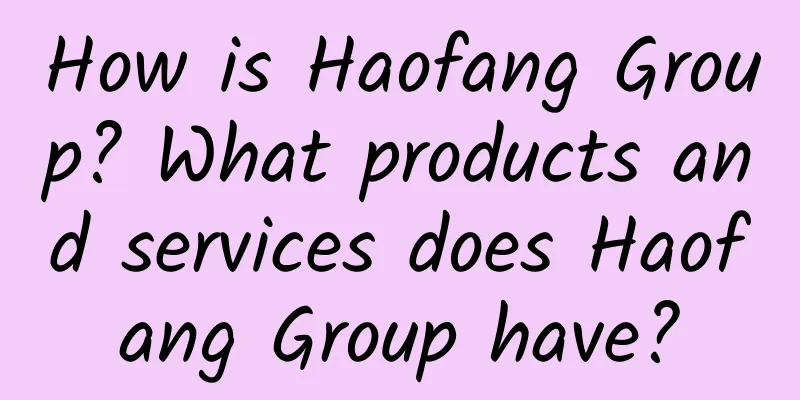What is vertical e-commerce? Which industry is most suitable for vertical e-commerce?

|
Vertical e-commerce is one of the operating modes of e-commerce. In fact, it has been developed relatively maturely in foreign countries such as the United States in the early days, and is still widely used in cross-border e-commerce circles, and most of them are B2B or B2C businesses for the same or related brands. So how to judge whether an e-commerce is vertical? An important point is whether the target customer group is consistent, such as men, the elderly, etc. Advantages of vertical e-commerce: The so-called verticality actually means focusing on one category and doing it well. Its clear direction greatly reduces the cost of acquiring customers. Vertical e-commerce integrates product management, services and channels, providing convenient and diversified choices for suppliers, retailers, buyers and even consumers, which greatly improves customer conversion rates and repurchase rates. Some people may be curious, with so many advantages, which industry is suitable for vertical e-commerce? The most important thing for vertical e-commerce is to maximize the platform value of users and to have high user stickiness. Some people think that clothes, shoes and hats are suitable, some think that digital products are suitable, and some think that industrial raw materials are more suitable... Then I think there is no clear answer to this. Whether it is suitable or not depends on how you do it: 1. Vertical categories. If this vertical e-commerce method is chosen, first of all, the variety of goods can be enriched to meet the customer's entire life cycle, including considering various pricing and promotional methods, etc., so as to guide customers to consume and achieve high frequency of repurchase. 2. Brand verticalization. This is crucial to the brand's popularity and influence, and needs to be based on a certain loyal customer base. Secondly, it is necessary to understand whether the brand's users have the habit of ordering online and whether the payment environment is convenient (whether large payments are required, shipping costs, etc.). Regarding vertical e-commerce, I still think it has a very promising future. How to expand and do well depends on the means of operation and promotion, the quality of products, and understanding of customer needs. To this end, we must understand what customers like and dislike. Making customers feel a sense of belonging and returning is not only the goal of vertical e-commerce, but also the goal of every cross-border e-commerce seller! This article introduces the basic understanding of vertical e-commerce. Please pay more attention to it in the future. |
>>: What is the process of opening a store on eBay? What do I need to prepare to sell on eBay?
Recommend
Common problems in BSCI factory audits
What are the problems that are easy to occur duri...
About EICC certification scoring standards
In the EICC certification audit, whether the supp...
How is the customs lawyer team? What services does the customs lawyer team provide?
The customs lawyer team was established in 2006 a...
What is the RoHS Directive? What are the basic contents of the RoHS Directive?
What is the RoHS Directive? On January 27, 2003, ...
What are some common email reply templates for eBay? [Ebay Tips]
1. eBay template for buyers asking about item det...
Clothing textile fabrics need to strengthen quality control in production links
Recently, Fu Guangwei, vice president of the Chin...
About A&F
A&F (Abercrombie & Fitch) Brand Introduct...
Avon factory audit results
Avon factory audit results: Green: All requirement...
Social Convention (ICS Factory Audit)
Following the guidance of the International Labor ...
What is Lazada? What are the advantages and disadvantages of Lazada?
What is Lazada? Lazada, the largest online shoppi...
What is Zhihui Xiyou? What services does Zhihui Xiyou provide?
What is Zhihui Journey to the West? Zhihuixiyou E...
The latest TESCO quality factory audit requirements
Regardless of the customer's factory inspecti...
How is Nuojin Customs Brokerage? What are the advantages of Nuojin Customs Brokerage?
How about Nuojin customs declaration? With its in...
What is luggage and mail customs clearance? What are the precautions for luggage and mail customs clearance?
What is luggage customs clearance? Luggage and ma...
Shandong Weihai Dishang Group's "Corporate Social Responsibility Management Training" came to a successful conclusion!
Never cherishing what you have is the philosophy o...









